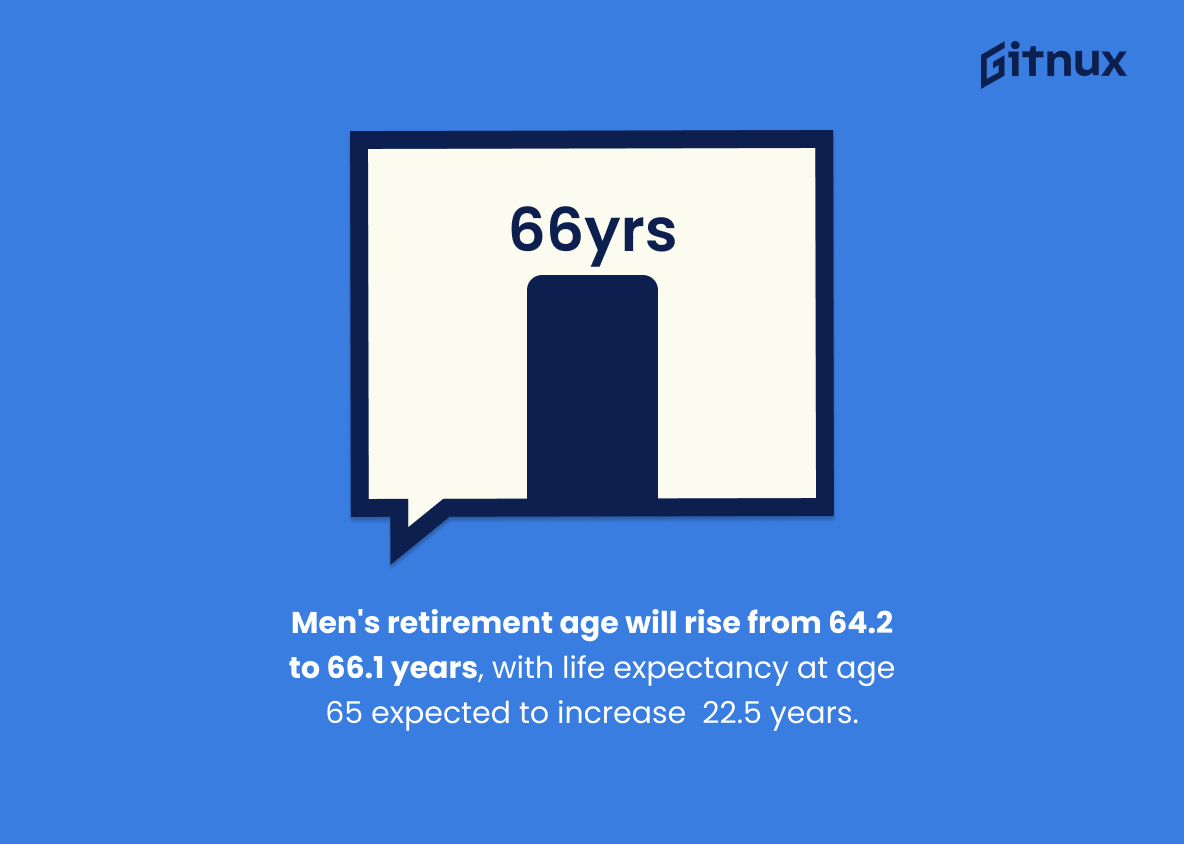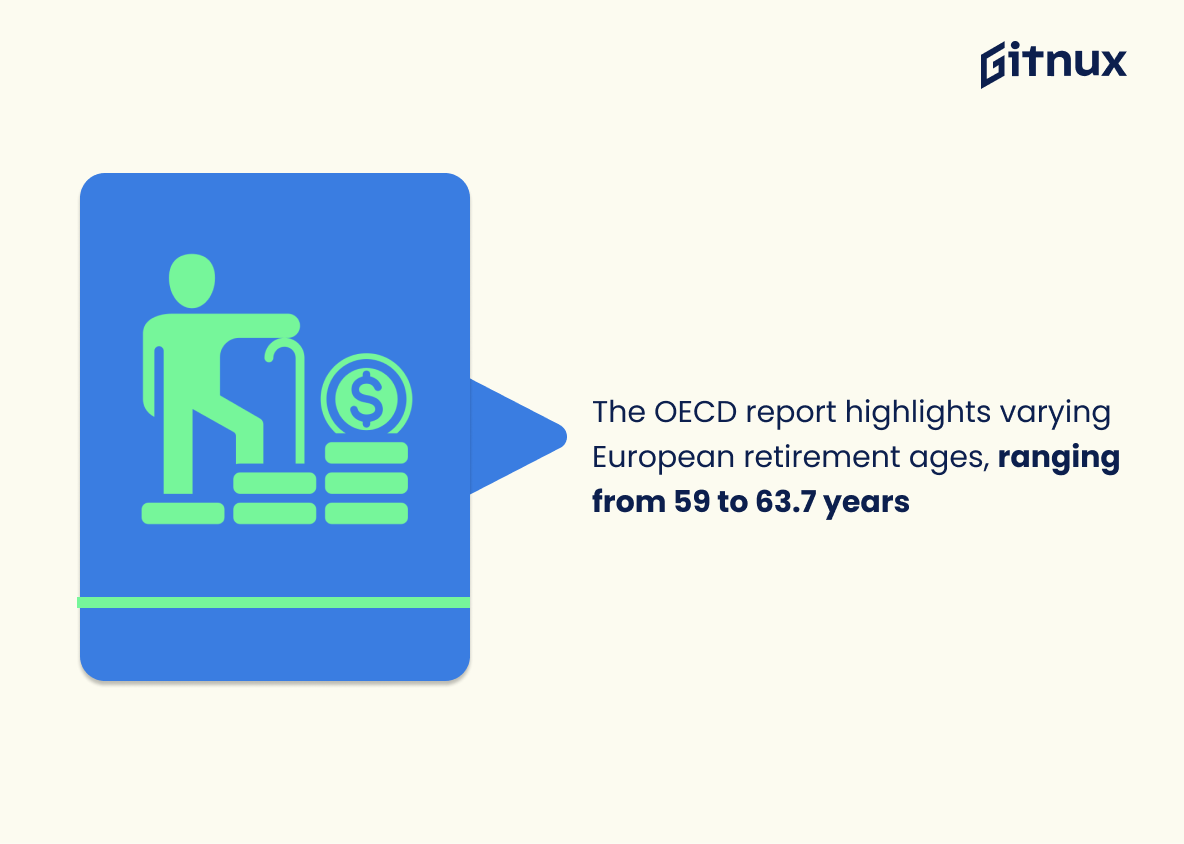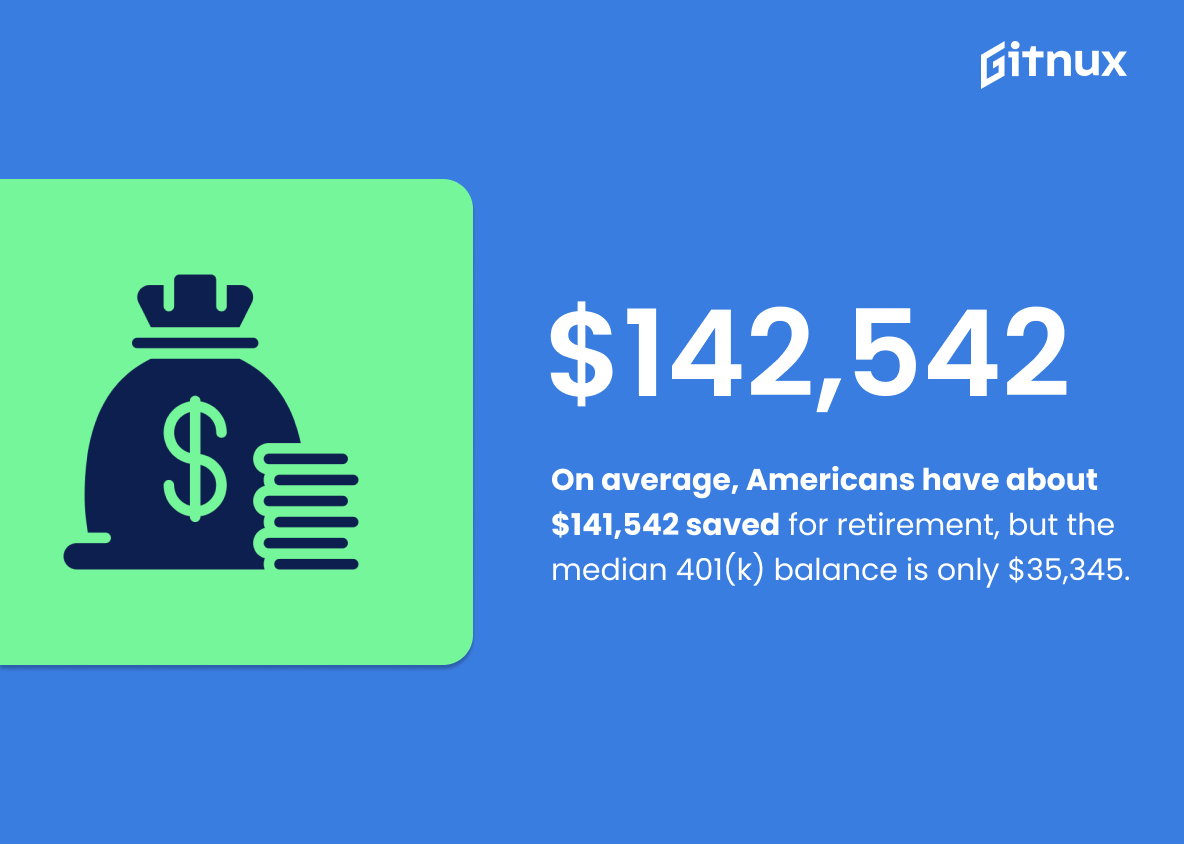Retirement is a major life event that many of us look forward to, but when is the right time to retire? In this blog post, we will explore retirement by age statistics to gain insight into when people are choosing to retire.
We will look at the average retirement age, the most popular retirement age, and the factors that influence when people choose to retire. We will also discuss the implications of retiring at different ages and the potential financial benefits of delaying retirement. Finally, we will provide tips for those who are considering retirement.
Retirement By Age: The Most Important Statistics
The OECD report shows that the retirement age for men and women in Europe ranges from 59 to 63.7 years, with the standard mandatory retirement age increasing in most OECD countries.
The normal retirement age for men is projected to increase from 64.2 to 66.1 years, while the remaining life expectancy of men at age 65 is projected to increase from 18.1 to 22.5 years.
Retirement By Age Statistics Overview
The average retirement age in the United States is 62, while the expected retirement age for current workers is 64 and the full retirement age is 67 for those born after 1959.
Americans are retiring earlier than the expected retirement age and the full retirement age, which could be a sign of a retirement crisis. Additionally, the retirement age is lowest in Alaska and West Virginia, which could be an indicator of the severity of the crisis.
The average retirement age has increased only slightly in the last 10 years, suggesting that earlier drivers of working longer are no longer having a substantial impact.
The factors that have been driving people to work longer, such as Social Security incentives, the shift to 401(k) plans, and improved health, longevity, and education, may therefore have played themselves out. This could mean that people are not able to rely on these factors to help them achieve a secure retirement.
The OECD report shows that the retirement age for men and women in Europe ranges from 59 to 63.7 years, with the standard mandatory retirement age increasing in most OECD countries.
Thus, there is a need for retirement planning and the need to understand the retirement age in the country of residence.
Many EU Member States are increasing their state pension age in order to keep older people in the workforce for longer and reduce the financial burden of state pensions.
This helps to offset the impact of population ageing, while also improving the financial well-being of older people who may not otherwise have an adequate income for their retirement.
On average, Americans have around $141,542 saved up for retirement, but the median 401(k) balance is only $35,345.
The average retirement savings of Americans is significantly higher than the median, indicating that a small number of people are saving much more than the majority of people.
Average retirement savings by age can vary greatly, and other factors such as lifestyle and income should be taken into account when determining how much to save for retirement.
The rule of thumb for retirement savings is to save 10 times your income if you want to retire by age 67, but this amount should be adjusted depending on the age of retirement. Retirement planning is important at any age, but it can be intimidating to plan for it when it feels so far away.
Navy SEALs are eligible for retirement after 20 years of service, with 50% of their average base salary.
Military retirement pay is expected to increase in the next couple years, with the number of military retirees in the US reaching 2.23 million by 2032.
The normal retirement age for men is projected to increase from 64.2 to 66.1 years, while the remaining life expectancy of men at age 65 is projected to increase from 18.1 to 22.5 years.
This shows that the average age at which people are retiring is increasing, which is important to consider when planning for retirement.
Additionally, the statistic displays that the life expectancy of men at age 65 is increasing, which is important to consider when planning for retirement as it means that people will need to plan for a longer retirement.
By 2050, 30% of the global population will be aged 65 or over, and some countries are already feeling the strain of this demographic shift.
Conclusion
In conclusion, retirement age statistics can be a useful tool to help you plan for your retirement. Knowing the average retirement age in your country or region can help you plan for when to start saving and investing for retirement.
Additionally, understanding the differences in retirement ages between genders and different occupations can help you make more informed decisions about your retirement planning. Ultimately, retirement age statistics can provide valuable insights into how to plan for your retirement.
References
1 – https://www.annuity.org/retirement/retirement-statistics/
2 – https://crr.bc.edu/briefs/the-average-retirement-age-an-update/
3 – https://www.euronews.com/next/2023/01/10/pension-reform-in-france-which-countries-have-the-lowest-and-highest-retirement-ages-in-eu#:~:text=The%20EU%20average%20stands%20at,age%20than%20the%20EU%20average.
4 – https://ec.europa.eu/eurostat/statistics-explained/index.php?title=Ageing_Europe_-_statistics_on_working_and_moving_into_retirement
5 – https://www.cnbc.com/2022/07/30/vanguard-how-much-americans-have-saved-for-retirement-by-age.html
6 – https://www.synchronybank.com/blog/median-retirement-savings-by-age/
7 – https://www.cnbc.com/select/savings-by-age/
8 – https://www.troweprice.com/personal-investing/resources/insights/youre-age-35-50-or-60-how-much-should-you-have-by-now.html
9 – https://www.thehealthyjournal.com/faq/at-what-age-does-a-navy-seal-retire
10 – https://www.statista.com/statistics/217354/forecast-number-of-military-retirees-in-the-us/
11 – https://www.oecd-ilibrary.org/sites/ca401ebd-en/1/3/3/6/index.html?itemId=/content/publication/ca401ebd-en&csp=9d37797bd84847326841f27f588be463&itemIGO=oecd&itemContentType=book
12 – https://www.visualcapitalist.com/best-countries-to-retire-in-2022/#:~:text=With%20an%20overall%20score%20of,friendly%20country%20on%20the%20list.&text=Norway%20is%20at%20the%20top%20of%20this%20year’s%20ranking%20for%20several%20reasons.









